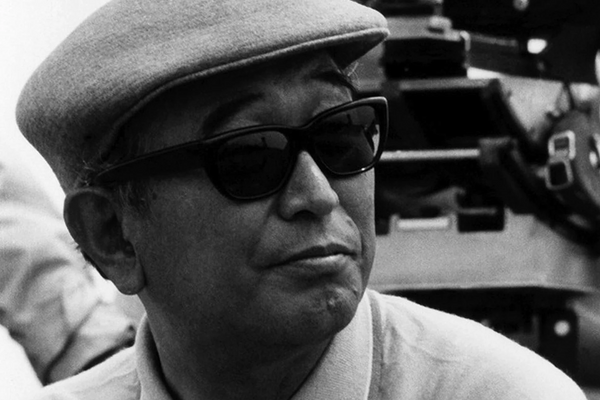Margaret Atwood once wrote, “We live in the gaps between the stories.” Well, technically she said, “We lived in the gaps between the stories,” and she was talking about a group of female slaves in a future dystopian society, but that doesn’t mean her profound words don’t apply to all of us. For example, if you follow the popular narrative, musician Hanni El Khatib is a heavy-drinking, rabble-rousing, retro-loving cartoon character. Nearly every review of his early music used the words “swagger,” “outsider,” or “whiskey-glazed” (I’d like to take credit for that last one, as I wrote it into his very first bio nearly five years ago). In fairness, Hanni provided some of the print-worthy catchphrases himself; his first album, 2011’s When The Guns Come Out, proclaimed itself to be “music for anyone who has ever been shot or hit by a train.” And, as a lifelong artist, longtime designer, and a creative director, he had specific ideas of how he wanted to present his art to the world. It’s doubtful he knew how far people would take his narrative, how narrowly they would define it, and how much of Hanni El Khatib, the person, would exist outside of that popular narrative. Even now, how much of Hanni lives in the gaps between the stories? The answer is: a lot. For example: did you know that before he became a growling rock star, Hanni and a friend ran a popular blog called Chillsville, which was an imaginary town populated by only chill animals? I did, mostly because I was said friend and am maybe still holding on to our 2010 dream (we were going to knock Farmville right out of the game!). What else don’t we know about the 33-year-old garage rocker (that is more pertinent to this story and not about me)? Let’s start with 8-year-old Hanni, a truly weird kid who loved drawing and skateboarding, and who turned in a “what I want to be when I grow up” paper in the third grade that expressed an interest in a future in graphic design. “I didn’t know it was called a graphic designer, but my aunt worked for an ad agency that designed the Body Glove logo. I was so fascinated with logos, like Gotcha, Rusty, and Stussy, that I just knew I wanted that job.”


Eleven years later, he got that job, after enrolling in Academy of Art in San Francisco and dropping out a year later when he was offered a position at an ad agency where one of his professors was a partner. “I was the youngest person that worked there. I was 19 and a fully salaried junior designer. It was fucking cool.” He worked there, making way more money and having way less fun than a kid his age should, until he up and quit out of nowhere a few years later to go on a three week tour with his friend Marc Bianchi’s music project, Her Space Holiday. Hanni had picked up the guitar at the age of eleven, after a year of ill-fated piano lessons, and dabbled in middle school grunge rip-off bands (“We did really bad versions of Nirvana songs. Early 90s, you know? Which probably would be hot on the blogs now”) before turning his interest to making beats. Yes, Mr. El Khatib is a secret underground hip-hop nerd. The two skills combined made him the perfect ringer for Her Space Holiday, a band with both rock and electronic components, and burnt out on his job and craving some fun, he jumped at the chance to change up his life. But playing with Bianchi wasn’t a full time thing, so, once back in San Francisco, Hanni went back to the design world, freelancing around for a while before a brief stint with the Gap, which he eventually left to work with his pal, pro skateboarder Keith Hufnagel. Hufnagel had recently decided to take his successful shoe stores and launch a full brand, and tapped Hanni to help him execute his vision. HUF is the part of the story that everyone knows, with a slew of articles painting Hanni as the skateboard artist turned indie rocker, tying his slick image to his background in, well, slick imagery, marveling at the fact that a designer could so quickly 180 into making music like that. But the truth is, it was no 180, and it was hardly quick.




During his six years at HUF, Hanni had not only been creating iconic imagery for a fast-growing lifestyle brand, but he had been quietly writing the songs that would later become When The Guns Come Out. “I started working on my first album without even knowing it.” That’s where fate stepped in, in the form of a chance meeting with Jamie Strong, who would later start the label Innovative Leisure. His co-worker encouraged him to pass on his demo to Strong, who then worked at Stones Throw. At that time, Hanni didn’t have any aspirations for his music past playing local shows and recording music for friends. “I was selling my first record at gigs for $5 with a zine and pins. I spent more money making that shit than I received selling it,” he says of his early musical career. “I just wanted to make a 7 inch and play some shows. I looked at someone like Tommy Guerrero as a blueprint. TG, he’s the coolest. He was a pro skater, now he owns a skate company, is an art director, and puts out records. That’s what I wanted to do.” So how did he go from a rock hobbyist to full-time touring musician and partner in a record label? This time it wasn’t fate, but Florence, as in Florence Welch of Florence and the Machine. “Within six months I was playing shows all the time, then all of a sudden there was an opportunity to go on tour with Florence and the Machine, who I wasn’t familiar with. All I knew was I went from playing bars like Kibbitz Room to playing the Greek Theater.” Once Hanni’s touring schedule exploded and interest in licensing his music picked up, he could no longer balance his day-job as the creative director of HUF and his life on the road. He made lists and crunched the numbers until he figured out he had just enough money to quit his job, go on tour, and live for a few months afterward. He took a leap of faith, and it just so happened at the exact same time that he left his nine to five, Jamie Strong and his partner Nate Nelson were also leaving their full time gigs to focus solely on Innovative Leisure. Hanni joined them as creative director and full partner which serendipitously paired his experience in art direction and music.


Since then, Innovative Leisure has become a force amongst indie labels. Billboard called it “a prodigy among young record labels,” and now, five years later, the label boasts a robust roster with notable acts like Nosaj Thing, Classixx, and Tijuana Panthers, amongst others. For his part, Hanni has found plenty of success as well, touring the world many times over and teaming up with Dan Auerbach of the Black Keys, who produced his second album, 2013’s Head In The Dirt. With this success came a new twist to the world’s story of Hanni El Khatib: the press began to find fault with his imagery, with his look, and with his lyrical content. Questions of authenticity popped up, and that same “heavy-drinking, rabble-rousing, retro-rocker” narrative that the press had helped to build up, they now began to knock down. It didn’t help that some of the real Hanni was lost in Auerbach’s heavy-handed production, although the record was a clear extension of his first. But Hanni brushes all of this off. “There’s an aesthetic to me that I didn’t necessarily intend on. Because of the black and white photography and vintage instruments or whatever. I get it; it’s the first layer you can scrape through. But if you really get past that, it’s not really about that at all. I don’t eat pea soup and a steak with milk and shoot guns every day, and only drive cars that pre-date 1962.” The layers under the surface have never been more apparent than they are in Hanni’s latest release, January’s Moonlight. For his third record, Hanni took control back into his own hands, producing the record himself and enlisting the help of famed musicians like Matt Sweeney and Greg Reeves to help him lay it down. The album is a garage rock record in the very loosest sense. In it Hanni incorporates elements of hip-hop and disco, and even taps the GZA to drop a verse on the titular song, “Moonlight.” A rap verse on a garage rock record might seem odd to an outsider, but to Hanni it makes perfect sense.
“If you know me, the record doesn’t come off as weird. But this is why I continuously try to do opposing things, both visually and sonically, in my work. Precisely why on this album we released a mixtape by J Rocc, who beat juggled the whole record, or why I did a song with Freddie Gibbs. Because right when people think they have it figured out or think they have me pinned, I’m like nah, you don’t really know me.” Between his role at Innovative Leisure, producing other bands, his own hectic touring schedule, and his outside design work, one might think the obsessive multi-tasker may have finally quelled his restlessness. One would be wrong. “Right now I’m obsessively collecting cacti. I would say I’m in the intermediate stage in knowing how to pot and plant these things. I’m at the place where I’m going to cactus farms... Other than that, I’m really trying to narrow my focus to four or five things,” Hanni says with a smile. While that all seems very practical, I for one hope he never narrows his focus, or his story. It’s so much more interesting this way.



